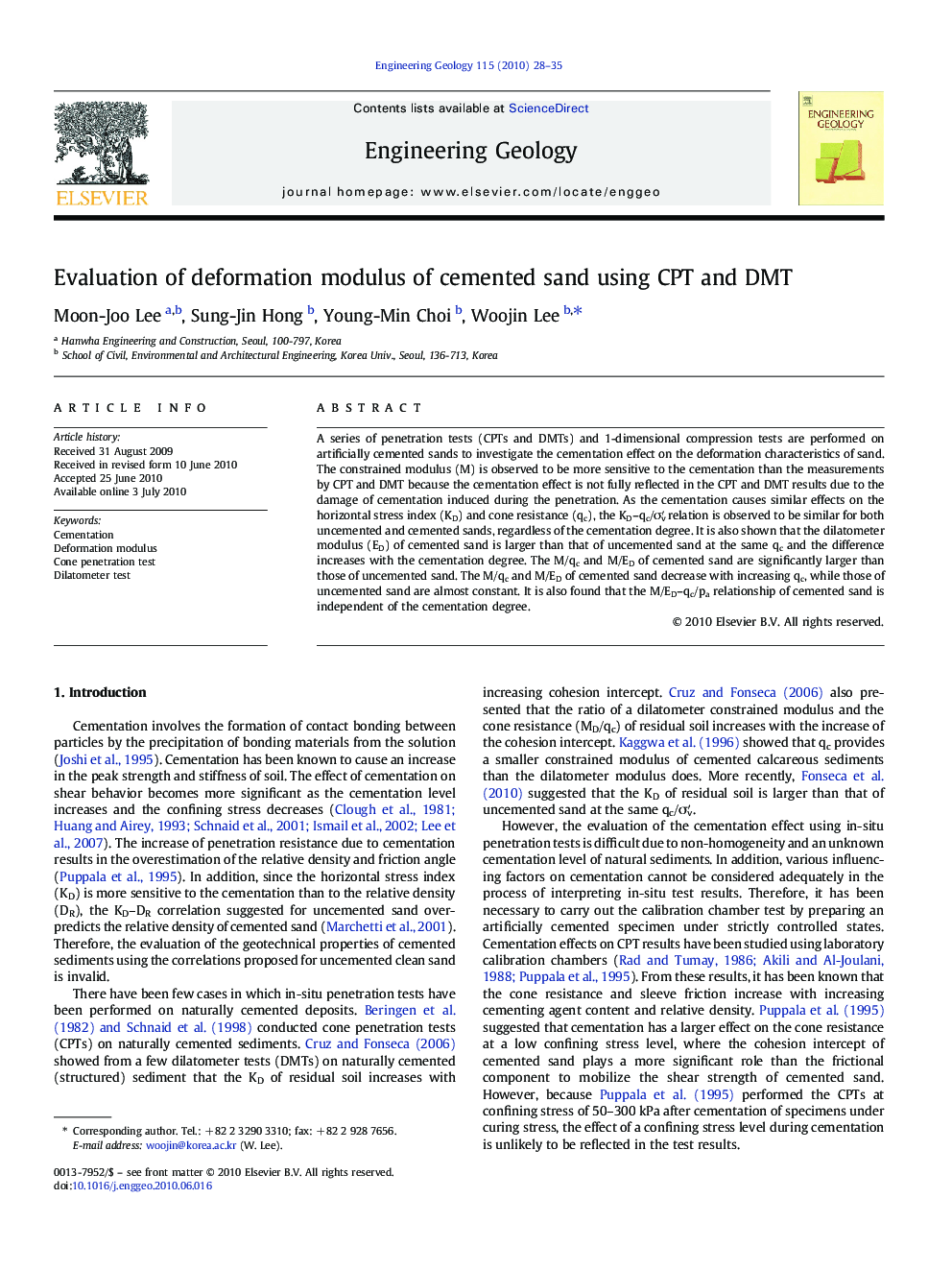| Article ID | Journal | Published Year | Pages | File Type |
|---|---|---|---|---|
| 4744268 | Engineering Geology | 2010 | 8 Pages |
A series of penetration tests (CPTs and DMTs) and 1-dimensional compression tests are performed on artificially cemented sands to investigate the cementation effect on the deformation characteristics of sand. The constrained modulus (M) is observed to be more sensitive to the cementation than the measurements by CPT and DMT because the cementation effect is not fully reflected in the CPT and DMT results due to the damage of cementation induced during the penetration. As the cementation causes similar effects on the horizontal stress index (KD) and cone resistance (qc), the KD–qc/σv′ relation is observed to be similar for both uncemented and cemented sands, regardless of the cementation degree. It is also shown that the dilatometer modulus (ED) of cemented sand is larger than that of uncemented sand at the same qc and the difference increases with the cementation degree. The M/qc and M/ED of cemented sand are significantly larger than those of uncemented sand. The M/qc and M/ED of cemented sand decrease with increasing qc, while those of uncemented sand are almost constant. It is also found that the M/ED–qc/pa relationship of cemented sand is independent of the cementation degree.
Research highlights► CPTs and DMTs on artificially cemented sand specimens using a calibration chamber. ► CPT and DMT do not fully reflect the cementation effect due to the damage induced during the penetration. ► Cementation causes a larger increase in the deformation modulus than the penetration resistance. ► M/ED-qc/pa relation seems to be independent of the cementation degree.
